April 12, 2017 / University of Brawijaya / Heart International
Text/ Wu Tingyao
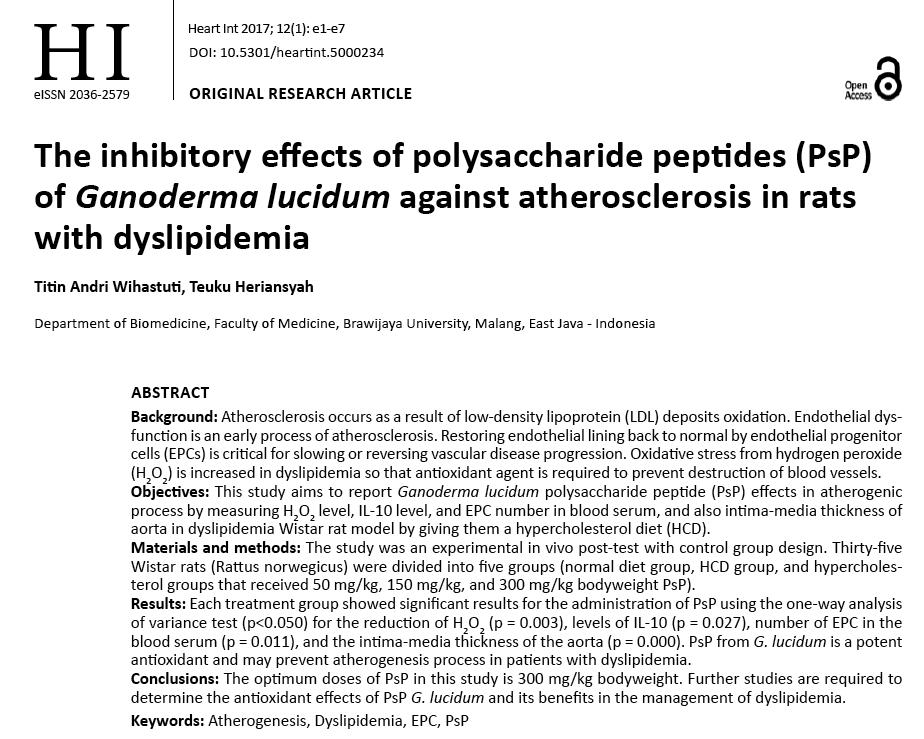
Long-term high-cholesterol diet can easily lead to abnormal blood lipids, and long-term abnormal blood lipids can lead to atherosclerosis. However, if Ganoderma lucidum polysaccharides is intervened, even if blood lipids are still abnormal, the risk of atherosclerosis is likely to be reduced.
“Heart International” published a report from the University of Brawijaya in Indonesia in 2017, proving that Ganoderma lucidum polysaccharide peptides (protein-rich β-D-glucan extracted from Ganoderma lucidum) have this protective effect.
Multiple effects against atherosclerosis
The researchers fed the rats with a high-cholesterol diet for 12 weeks. Three groups of rats were simultaneously fed with low, medium and high doses (50, 150, 300 mg/kg) of Ganoderma lucidum polysaccharide peptides (PsP) preparation, which contains 20% Ganoderma lucidum polysaccharide peptides, in the last 4 weeks of the experiment.
After the experiment, the health of the rats’ blood vessels was analyzed through four indicators, and the following results were found regarding the rats that ate Ganoderma lucidum polysaccharide peptides:
1. The concentration of free radicals H2O2 in the serum is significantly lower — the low-density lipoprotein cholesterol (LDL-C) accumulated in the blood vessel wall is oxidized by free radicals, which is the first step in the formation of atherosclerosis. When free radicals decrease, the chance of atherosclerosis naturally decreases.
2. The secretion of IL-10, an anti-inflammatory cytokine, is reduced — it means that the degree of inflammation is mild, so there is no need for so much IL-10 to fight inflammation.
3. The number of “endothelial progenitor cells” that can be used to repair damaged blood vessel walls has increased — endothelial progenitor cells that circulate throughout the body with blood can repair blood vessel walls damaged by oxidation and inflammation. Therefore, the increase of endothelial progenitor cells indicates that the possibility of repairing the damaged blood vessel wall is increased, and the chance of further evolving into atherosclerosis is relatively reduced.
4. The thickness of the inner wall of the aorta (intima and media) is close to normal — the cross-section of the arterial vessel can be divided into three layers from the inside to the outside: the wall of the blood vessel in contact with the blood flow is called the intima, which is composed of endothelial cells; the middle layer composed of smooth muscle is called the media. These two layers of vascular tissues are the most important lesion areas of atherosclerosis. Therefore, when the thickness of the two layers is closer to normal, it means that the arteries are in a relatively healthy state.
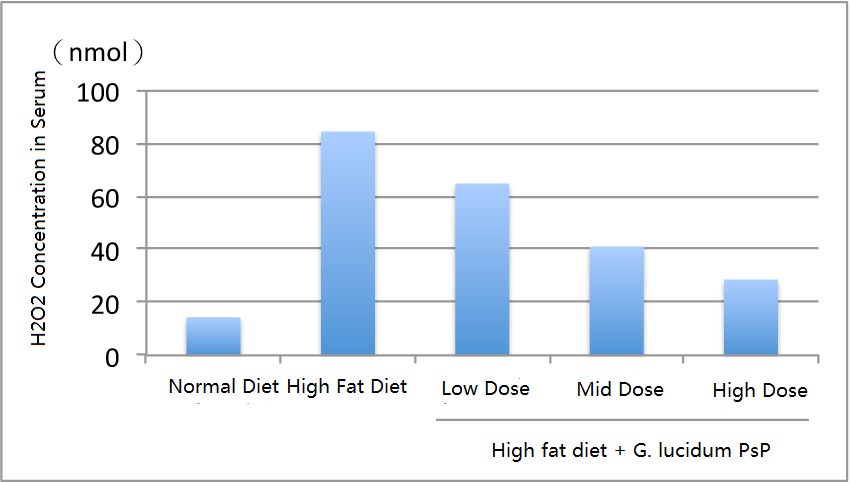
Free radical concentration in rat serum
[Note] H2O2 is a kind of free radical. The lower its concentration, the less likely it is to form atherosclerosis. (Drawing/Wu Tingyao, data source/Heart Int. 2017; 12(1): e1-e7.)
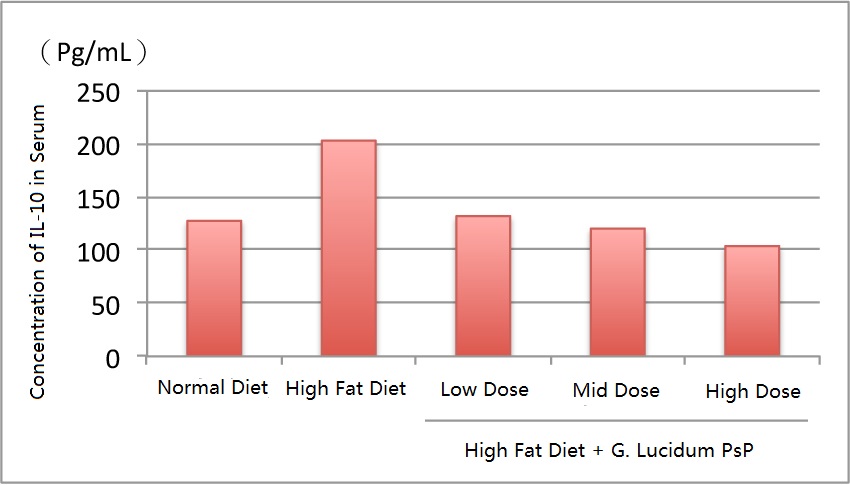
The concentration of anti-inflammatory cytokine in rat serum
[Note] When the anti-inflammatory IL-10 concentration in the serum is not so high, it implies that the inflammation of the blood vessel wall may not be so severe, and the risk of atherosclerosis is also reduced. (Drawing/Wu Tingyao, data source/Heart Int. 2017; 12(1): e1-e7.)
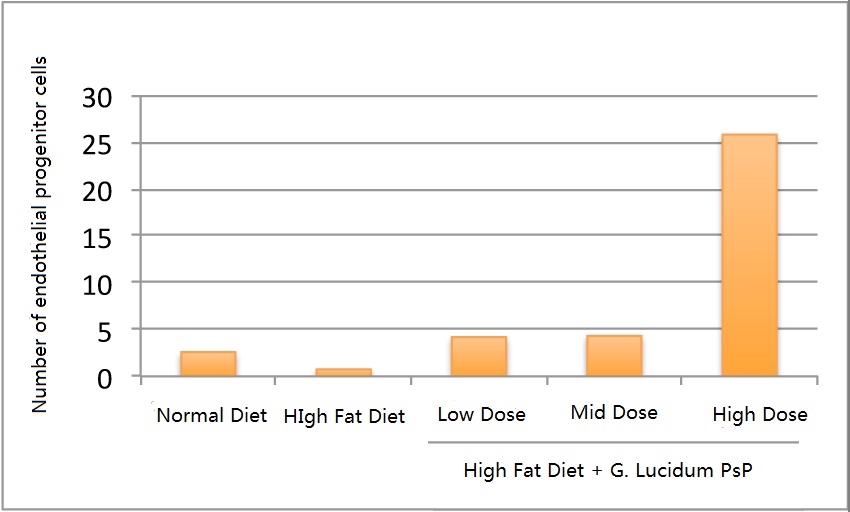
The number of endothelial progenitor cells in rat blood
[Note] Endothelial progenitor cells can repair damaged blood vessel walls. When their number increases, it means that the risk of atherosclerosis is reduced or can be delayed. (Drawing/Wu Tingyao, data source/Heart Int. 2017; 12(1): e1-e7.)
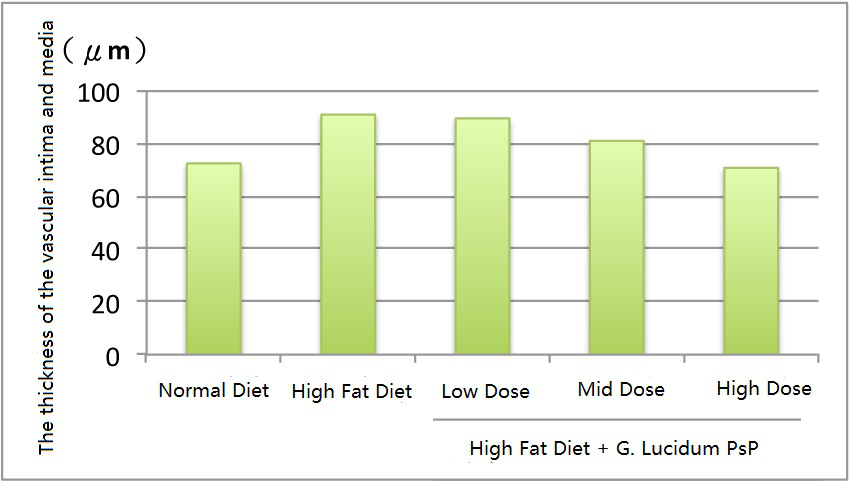
The thickness of the arterial wall of the rat
[Note] The vascular “intima” and “media” are the most important lesion areas of atherosclerosis. The closer their thickness is to that of arteries under normal diet, the healthier the blood vessels will be. (Drawing/Wu Tingyao, data source/Heart Int. 2017; 12(1): e1-e7.)
The protection of Ganoderma lucidum polysaccharide peptides on the cardiovascular system may not be fully reflected in the visible indicators.
The above experiments show that although the cause of atherosclerosis (high-fat diet) still exists, and blood lipids are still abnormal, Ganoderma lucidum polysaccharide peptides can keep the artery blood vessels in a relatively healthy state through the triple effects of anti-oxidation, anti-inflammation and improving the chance of repairing damaged blood vessel walls. And the effect of Ganoderma lucidum polysaccharide peptides is proportional to its dosage.
Because the research team has previously confirmed through clinical studies that the use of this Ganoderma lucidum polysaccharide peptides preparation for adjuvant treatment of patients with angina pectoris can greatly improve inflammation, oxidative damage, blood sugar, and blood lipids in the body, thereby reducing the frequency and severity of angina pectoris. Therefore, the clinical application potential of Ganoderma lucidum polysaccharide peptides is indeed worthy of our expectations.
Many studies in the past have used “lowering blood lipids to normal” as a specific indicator of the effectiveness of Ganoderma lucidum in protecting the cardiovascular system. However, research from Indonesia tells us that even if blood lipids have not returned to normal, or even if angina pectoris still occurs, we should not get disappointed with Ganoderma lucidum because it has been working, but you may not be able to see its effect with your own eyes. As long as it is eaten often and for a long time, the protection of Ganoderma lucidum on the cardiovascular system will continue.
[Data Source] Wihastuti TA, et al. The inhibitory effects of polysaccharide peptides (PsP) of Ganoderma lucidum against atherosclerosis in rats with dyslipidemia. Heart Int. 2017; 12(1): e1-e7.
END
About the author/ Ms. Wu Tingyao
Wu Tingyao has been reporting on first-hand Ganoderma information since 1999. She is the author of Healing with Ganoderma (published in The People’s Medical Publishing House in April 2017).
★ This article is published under the exclusive authorization of the author.
★ The above works cannot be reproduced, excerpted or used in other ways without the authorization of the author.
★ For violations of the above statement, the author will pursue relevant legal responsibilities.
★ The original text of this article was written in Chinese by Wu Tingyao and translated into English by Alfred Liu. If there is any discrepancy between the translation (English) and the original (Chinese), the original Chinese shall prevail. If readers have any questions, please contact the original author, Ms. Wu Tingyao.



